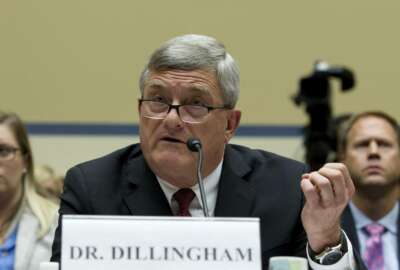

As a preview to the year ahead, here's a look at the major projects three public-facing agencies will encounter in 2020.
The Census Bureau this year will reap the benefits — and deal with the consequences — of its first internet-focused decennial count. The IRS will take another crack at IT and business process modernization after receiving funding for it from Congress. And the Postal Service will name another postmaster general, and chart a course for financial sustainability.
As a preview to the year ahead, here’s a look at the major projects public-facing agencies will encounter in 2020:
Later this month, the Census Bureau will officially begin the 2020 population count in Toksook Bay, Alaska, a remote fishing village with about 200 residents.
The Associated Press has reported that the bureau launched its ad campaign in the area last week, and that the bureau expects to begin the count in the third week of January.
The bureau begins its count early in this rural location because the frozen ground in winter makes it easier for enumerators to reach the village. A lack of reliable mail service and low internet connectivity also require an in-person count.
For the rest of the United States, nearly all households will receive their notice about the 2020 census in the mail in mid-March.
While most households will receive a postcard inviting them to respond to the census online, a select number of households, based on consumer data about internet use, will receive a paper questionnaire in their first mailing from the bureau.
The new technology that underpins the decennial count presents both challenges and opportunities for the bureau and its future operations.
For opportunities, the bureau has billed most of its technology modernization as an opportunity to reduce labor costs for increasingly more expensive population counts.
The Commerce Department in 2018 estimated that the 2020 count could cost as much as $15.6 billion, which would make it the most expensive decennial count.
But over the past year, the bureau has demonstrated how big data tools can streamline its operations and reduce the amount of labor it needs to carry about certain tasks related to the census.
Last summer, the bureau completed a majority of its address canvassing work through administrative records and satellite imagery data it borrowed from the National Geospatial-Intelligence Agency. As a result, the bureau only hired 40,000 canvassers to complete the rest of the work — a fraction of the 150,000 hires needed for this work in 2010.
This decennial count also marks the first time every household has the opportunity to respond via the internet. The bureau expects a majority of households to respond to the census online, which should reduce some of the costs of non-response follow-up, the most expensive phase of operations where enumerators knock on doors of households that have yet to complete a questionnaire.
But moving many of its operations online has also introduced cybersecurity threats, as well as the threat of disinformation campaigns on social media.
For cyber threats, the bureau has partnered with the Department of Homeland Security and the intelligence community for a level of cyber defense equivalent to what’s provided for national elections. Meanwhile, the bureau has partnered with companies to combat disinformation about the count.
The IRS this year will kick off a six-year IT modernization strategy in April focused on four pillars: taxpayer experience, enforcement, operations and cybersecurity.
For long-range goals, the IRS will look to modernize its Individual Master File, the engine behind the millions of income tax returns that will be filed over the next few months.
As for short-term goals, IRS Commissioner Chuck Rettig told Congress last year that the agency expects to shrink its legacy IT inventory by 4% by the end of this fiscal year.
Congress in last month’s fiscal 2020 spending deal gave the IRS the budget it’ll need to get this project off the ground. The IRS has a budget now of more than $11.5 billion, the highest overall budget it’s had in recent years.
Specifically for IT modernization, the IRS has $180 million to spend between now and September 2022. But Congress has also required the agency to provide quarterly progress updates to the House and Senate appropriations committees.
The Postal Service’s Board of Governors, now that it has enough members to reach a quorum, will soon select a new leader to oversee an overhaul of its business model.
Postmaster General Megan Brennan will retire at the end of this year, ending a 33-year career at USPS after holding the top job for the past five years.
While the past four postmasters general held position within USPS before its board appointed them to serve as postmaster general, the board in November announced that they had hired an outside search firm to help them find a new postmaster general, a move that suggests a search for candidates outside the organization.
For the past 13 years, the Postal Service has reported repeated net financial losses. In fiscal 2019, alone, USPS ended that year $8.8 billion in the red.
While much of that has to do with the pre-funding of health benefits for postal retirees well into the future, the Postal Service has pushed for legislative change, as well as regulatory change on how it can set its prices.
Copyright © 2025 Federal News Network. All rights reserved. This website is not intended for users located within the European Economic Area.
Jory Heckman is a reporter at Federal News Network covering U.S. Postal Service, IRS, big data and technology issues.
Follow @jheckmanWFED



